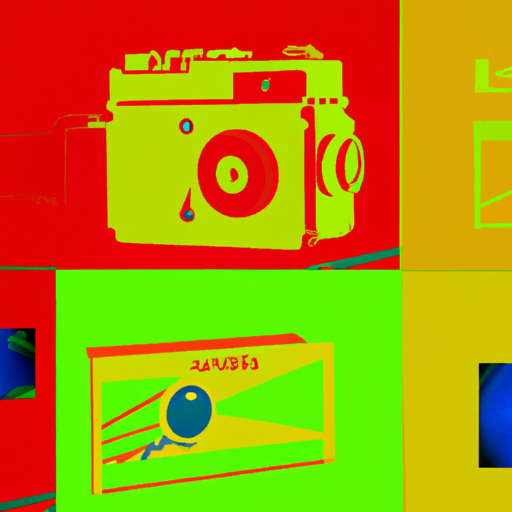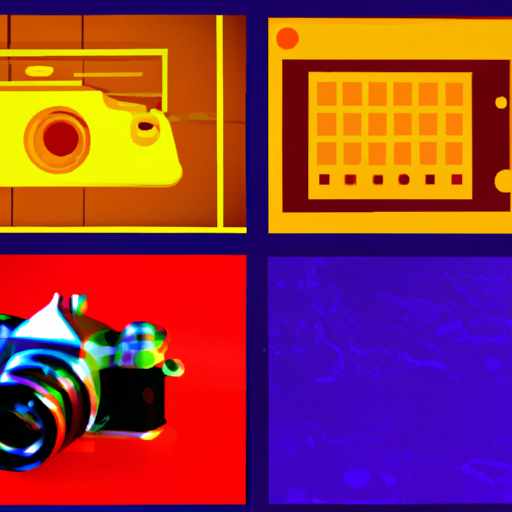
-
Table of Contents
Futuristic UI/UX Design: Creating Interfaces for Tomorrow

In today’s rapidly evolving technological landscape, user interface (UI) and user experience (UX) design play a crucial role in shaping the way we interact with digital products and services. As we look towards the future, it becomes increasingly important to explore and understand the potential of futuristic UI/UX design. This article delves into the concept of futuristic UI/UX design, its key principles, and how it can shape the interfaces of tomorrow.
The Evolution of UI/UX Design
UI/UX design has come a long way since the early days of computing. From the command-line interfaces of the past to the graphical user interfaces (GUIs) that revolutionized personal computing, design has always been at the forefront of improving user interactions. Today, we are witnessing a new era of UI/UX design, driven by emerging technologies such as artificial intelligence (AI), virtual reality (VR), and augmented reality (AR).
These technologies are not only transforming the way we interact with digital interfaces but also opening up new possibilities for designers to create immersive and intuitive experiences. Futuristic UI/UX design takes inspiration from these technologies and envisions a future where interfaces seamlessly blend with our daily lives.
The Key Principles of Futuristic UI/UX Design
1. Minimalism: Futuristic UI/UX design embraces minimalism by removing unnecessary elements and focusing on essential functionality. This approach creates clean and clutter-free interfaces that are visually appealing and easy to navigate.
2. Seamless Integration: Interfaces of the future should seamlessly integrate with our physical surroundings. This can be achieved through technologies like AR, which overlay digital information onto the real world. By blending the virtual and physical realms, futuristic UI/UX design enhances user experiences and provides contextually relevant information.
3. Personalization: The interfaces of tomorrow will be highly personalized, adapting to individual users’ preferences and needs. AI-powered algorithms will analyze user data to deliver tailored experiences, making interactions more efficient and enjoyable.
4. Gesture-Based Interactions: As touchscreens become more prevalent, gesture-based interactions are becoming increasingly popular. Futuristic UI/UX design explores new ways of interacting with interfaces, such as hand gestures, voice commands, and eye tracking. These intuitive interactions enhance user experiences and make interfaces more accessible to a wider range of users.
Case Studies: Examples of Futuristic UI/UX Design
1. Tesla’s Touchscreen Interface: Tesla’s electric vehicles feature a futuristic touchscreen interface that controls various aspects of the car, from navigation to climate control. The interface is designed to be intuitive and user-friendly, with large icons and minimal distractions. It also receives regular software updates, introducing new features and improvements, showcasing the potential of futuristic UI/UX design in the automotive industry.
2. Microsoft HoloLens: Microsoft’s HoloLens is an example of futuristic UI/UX design in the realm of augmented reality. The device overlays holographic images onto the real world, allowing users to interact with digital content in a natural and immersive way. The interface is designed to be gesture-based, enabling users to manipulate virtual objects with their hands. This innovative design opens up new possibilities for industries such as architecture, healthcare, and education.
The Future of UI/UX Design
As technology continues to advance, the future of UI/UX design holds immense potential. Here are some trends and predictions for the interfaces of tomorrow:
- Virtual reality (VR) and augmented reality (AR) will become more prevalent, creating new opportunities for immersive and interactive experiences.
- Artificial intelligence (AI) will play a significant role in personalizing interfaces and automating tasks, making interactions more efficient and tailored to individual users.
- Voice and gesture-based interactions will continue to evolve, allowing for more natural and intuitive ways of interacting with interfaces.
- Interfaces will become more context-aware, adapting to users’ environments and providing relevant information in real-time.
- Accessibility will be a key focus, ensuring that interfaces are inclusive and accessible to users with disabilities.
Conclusion
Futuristic UI/UX design is an exciting field that explores the potential of emerging technologies to shape the interfaces of tomorrow. By embracing minimalism, seamless integration, personalization, and gesture-based interactions, designers can create immersive and intuitive experiences that enhance user interactions. Through examples like Tesla’s touchscreen interface and Microsoft HoloLens, we can see the impact of futuristic UI/UX design in various industries. As we look towards the future, it is clear that UI/UX design will continue to evolve, driven by advancements in technology and the ever-changing needs of users.
